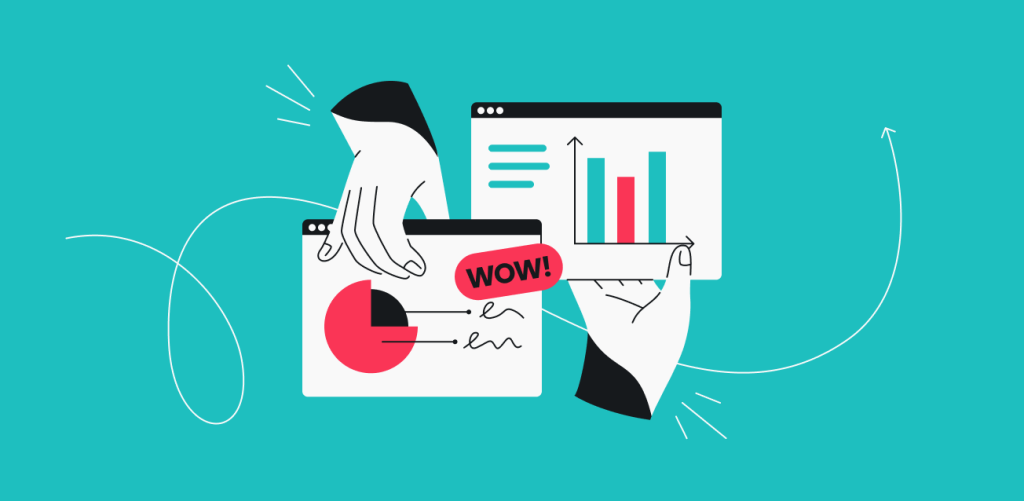I Thought I Was Private Online. Then I Googled Myself.
Last month, I made the mistake of searching for my own name online. What I found made my stomach drop.
There was my home address from 2018. Photos I thought I’d deleted years ago. Even my approximate income range from some sketchy data broker site I’d never heard of. Most unsettling? A detailed profile of my interests, shopping habits, and “lifestyle preferences” that was eerily accurate.
That rabbit hole led me down a three-week journey into online privacy that honestly changed how I use the internet. If you’re feeling like your digital life is spinning out of control, or if targeted ads are getting creepily specific, this guide is for you.
The Wake-Up Call: Your Data is Already Out There
Here’s what really opened my eyes: I wasn’t careless with my privacy. I used strong passwords, avoided sketchy websites, and thought I was pretty smart about online security. But I was still hemorrhaging personal information every single day.
Every Google search, every “Sign in with Facebook” button I clicked, every time I let an app access my location “just this once” – it all added up to a detailed digital portrait that companies were buying and selling without me even knowing.
The breaking point came when I got a targeted ad for anxiety medication right after texting my friend about feeling stressed. Coincidence? Maybe. But it spooked me enough to finally take action.
Browser Reality Check: Chrome is Not Your Friend
This was my first real change, and honestly, the hardest one. I’d been using Chrome for over a decade. My passwords were there, my bookmarks, my entire digital life was integrated with Google.
But here’s the thing – Chrome is designed to collect your data. That’s Google’s business model. So I made the switch, and after two weeks of adjustment, I don’t miss it.
Brave became my daily driver. It blocks ads and trackers automatically, which means pages load faster and my battery lasts longer on mobile. The built-in cryptocurrency stuff seemed gimmicky at first, but I’ve actually earned a few bucks just from browsing normally.
Firefox is what I use for work. It’s more customizable, and I love that it’s not owned by a data-hungry corporation. Plus, the privacy settings are way more transparent than Chrome’s buried options.
Tor I reserve for when I really want to be anonymous – like researching sensitive topics or accessing sites that might be blocked. Yes, it’s slower, but the peace of mind is worth it.
Pro tip: Whatever browser you choose, immediately enable HTTPS-Only mode and disable WebRTC. These small changes prevent websites from seeing your real IP address and ensure your connections are encrypted.
VPN Shopping: What I Learned the Hard Way
I’ll be honest – I was cheap about VPNs at first. I tried a few free ones and quickly learned why “free” VPN services are often worse than no VPN at all. One was injecting ads into web pages, another was logging everything I did online.
After researching for weeks and testing several options, here’s what I actually use:
ProtonVPN is my main choice. The company is based in Switzerland (strong privacy laws), they’ve been audited multiple times, and their free tier is genuinely useful. I eventually upgraded to paid because I wanted faster speeds and access to streaming-optimized servers.
Windscribe impressed me with its additional privacy tools. It’s not just a VPN – it has built-in ad blocking and malware protection that actually works better than some standalone security apps I’ve tried.
Atlas VPN gets an honorable mention for being incredibly user-friendly. If you’re intimidated by technical stuff, this one just works without any configuration.
The VPNs I avoid: Anything with flashy YouTube ads, free services from unknown companies, and any VPN that’s owned by a data broker (yes, this is a thing).
Messaging Apps: The Great Migration
Moving away from WhatsApp and Facebook Messenger was surprisingly difficult, mainly because of the network effect – everyone I know uses them.
But I started small. I convinced my closest friends and family to try Signal, and now it’s our primary group chat. The interface is clean, messages are end-to-end encrypted by default, and it’s backed by a nonprofit foundation, not a surveillance capitalism company.
Session is what I use for more sensitive conversations. It doesn’t require a phone number to sign up, and messages are routed through an onion network for extra anonymity. The trade-off is that it’s a bit clunkier than mainstream apps.
For email, switching from Gmail to ProtonMail was a game-changer. Not just for privacy, but for peace of mind. I sleep better knowing my emails aren’t being scanned to sell me products or build psychological profiles.
Device Privacy: The Settings They Hope You Ignore
This part made me feel stupid. I’d been carrying around a pocket surveillance device for years without realizing how much data I was voluntarily handing over.
The advertising ID revelation: Both iPhone and Android assign you a unique advertising identifier that follows you across apps. I turned this off immediately (Settings > Privacy > Apple Advertising on iOS, Settings > Google > Ads on Android).
Location history nightmare: I discovered Google had been tracking everywhere I went for five years. Not just when I used Maps – everywhere. All the time. The timeline was detailed enough to know which grocery store aisles I spent the most time in.
Search engine switch: Switching from Google to DuckDuckGo felt weird at first – the results were slightly different – but I quickly adapted. Now when I search for medical symptoms, I don’t get targeted ads for medications for the next six months.
Android users: I installed Blokada and was shocked to see how many tracking requests my apps were making in the background. Some social media apps were “phoning home” dozens of times per hour, even when I wasn’t using them.
The Great Account Purge of 2024
This part was both cathartic and terrifying. I used JustDelete.me to find direct links to delete accounts from services I’d forgotten I even used. Some highlights from my digital archaeology:
- A Spotify account from 2012 that still had my college address
- Three different fitness apps that were sharing my workout data
- Shopping accounts with saved payment information from stores I hadn’t visited in years
- A dating app profile that was apparently still active (awkward)
Mine.com helped me discover which companies had my information. The list was longer than I expected and included data brokers I’d never heard of. Some had incredibly detailed profiles – more comprehensive than what my close friends know about me.
I’m testing Incogni for the data removal requests. It’s paid, but for $5 a month, they handle the tedious process of contacting dozens of data brokers on my behalf. So far, they’ve successfully removed my information from 23 different databases.
Privacy Tools That Actually Matter
Here are the browser extensions and apps that made the biggest difference in my daily life:
uBlock Origin is non-negotiable. It blocks ads, trackers, and malicious scripts. Web pages load faster, I use less data, and I see fewer creepy targeted ads.
Privacy Badger learns which trackers to block over time. It’s like having a digital bodyguard that gets smarter the more you browse.
SimpleLogin lets me create unlimited email aliases. When I sign up for something new, I create a unique email address for that service. If they start spamming me or sell my email, I know exactly who did it and can disable that specific alias.
KeePassXC replaced my browser’s password manager. It’s more secure, works across all devices, and I don’t have to worry about a company getting hacked and exposing all my passwords.
The Honest Trade-offs
I won’t sugarcoat this – prioritizing privacy requires some compromises:
Convenience: Some websites don’t work properly with ad blockers. Online shopping is slightly more cumbersome when sites can’t track you across the web. Voice assistants are way less useful when you limit their data access.
Social friction: Not everyone wants to install Signal just to message me. Some friends think I’m being paranoid (maybe I am, but I’m okay with that).
Performance: VPNs sometimes slow down your internet. Privacy-focused alternatives to popular services often have fewer features or rougher interfaces.
Cost: Good privacy tools often cost money. Between my VPN, email service, and data removal service, I spend about $15 per month on privacy. But I’ve eliminated way more than that in impulse purchases from targeted ads.
What Changed for Me
Six months into this privacy journey, here’s what I’ve noticed:
The internet feels less claustrophobic. I’m not constantly bombarded with ads for things I looked at once. My social media feeds are less manipulative because platforms have less data to optimize for engagement.
I think more critically about what I share and where. I pause before clicking “Accept All Cookies” or granting app permissions.
My phone battery lasts longer because fewer apps are running background processes to collect data.
Most importantly, I feel like I have some control back. The internet doesn’t feel like it’s happening to me – I’m making conscious choices about my digital life.
Starting Your Privacy Journey
If this all feels overwhelming, start small. You don’t have to completely overhaul your digital life overnight. Here’s what I’d recommend for beginners:
- Switch browsers first – This single change will immediately improve your privacy with minimal effort
- Install uBlock Origin – Block ads and trackers with one browser extension
- Use a VPN for public WiFi – Start with ProtonVPN’s free tier
- Clean up one old account per week – Use JustDelete.me to make it easy
- Try an encrypted messaging app – Start with Signal for one group chat
The goal isn’t to become completely anonymous (unless you want to). It’s to make conscious choices about your privacy instead of accepting whatever default level of surveillance happens to be profitable for tech companies.
What privacy tools have you tried? I’m always looking for recommendations, especially from people who’ve found good alternatives to mainstream services. The privacy community is surprisingly helpful and welcoming to newcomers.



